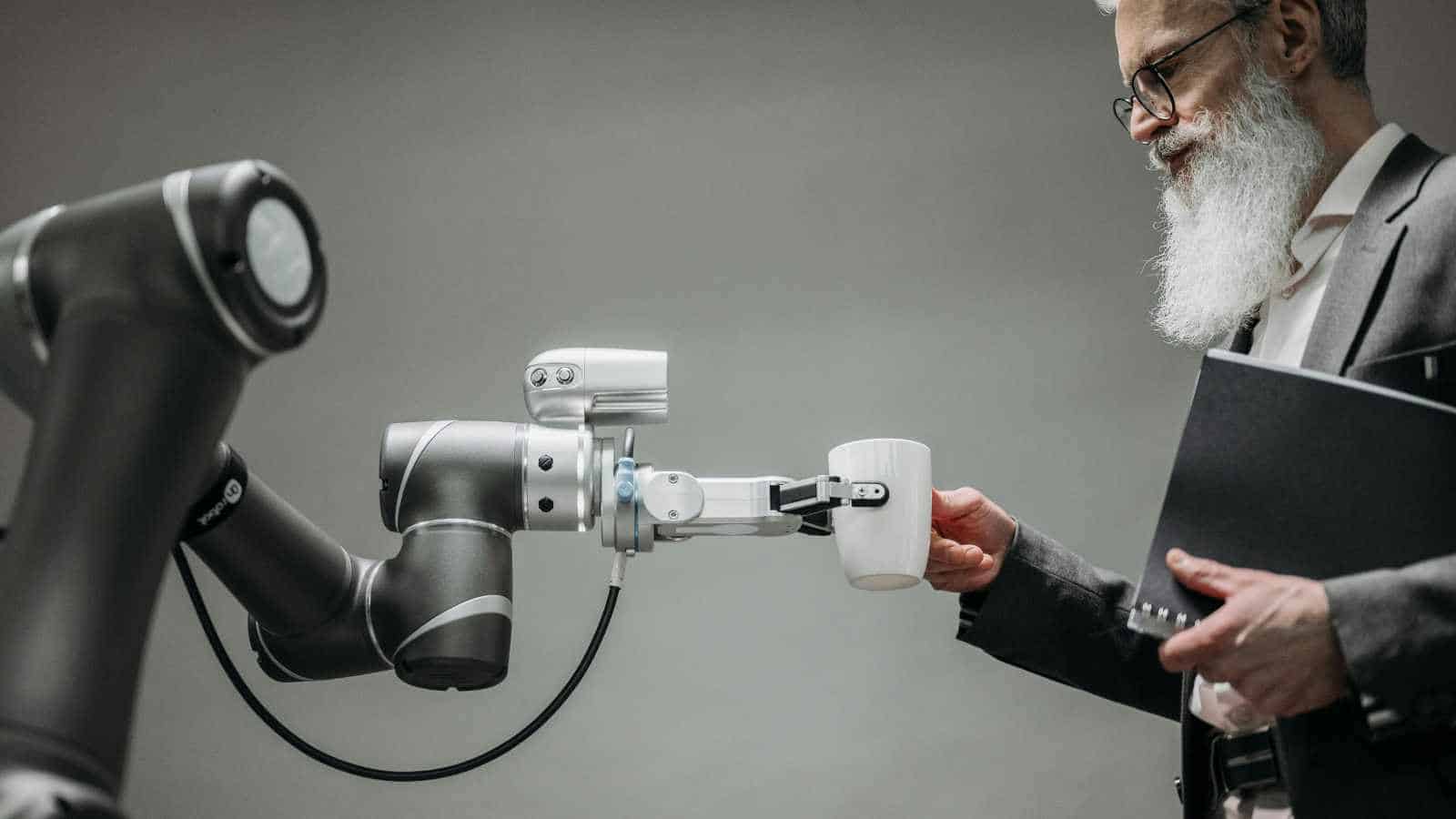How the AI Revolution Could Erase the Working Class in 14 Ways
Automation won’t announce itself. It’ll just stop calling you in for shifts.
In a landmark study, Stanford University and collaborators analysed monthly payroll data covering millions of U.S. workers from late 2022 through mid-2025, focusing on occupations with high exposure to generative AI. They found that early-career workers (ages 22–25) in those roles experienced a roughly 13% relative decline in employment compared to older workers, even after controlling for firm-level factors. This is a clear way that the future will not hold a high count of working-class persons
Machines once replaced muscle. Now they’re starting to replace judgment — the kind that used to earn a steady wage. And while many imagine AI stealing tech jobs or creative gigs, the real casualty may be the working class itself: the millions who keep the economy running, often unnoticed, and whose stability keeps democracy breathing.
The Great Substitution Has Already Begun

A 2025 study by the World Economic Forum projects that 92 million jobs will disappear by 2030 due to AI-driven automation, while 78 million new roles will emerge, but mostly in data-heavy or highly skilled sectors. The arithmetic looks balanced, but the mismatch between geography and skills makes it misleading.
Many new roles won’t appear where the old ones vanish. Economists call this “task replacement without worker replacement.” If it sounds bloodless, that’s the point — this shift happens quietly, spreadsheet by spreadsheet.
Routine Work Is an Open Target

A paper by MIT’s Daron Acemoglu and Boston University’s Pascual Restrepo shows that every robot added to the U.S. workforce replaces 3.3 workers on average in routine tasks. These aren’t just factory arms; they include software bots processing claims, handling support tickets, or managing logistics.
The more predictable the work, the faster it disappears. Unlike past shifts where machines created new kinds of labor, today’s automation often replaces without rebuilding. For millions whose value once lay in precision and repetition, AI doesn’t just outpace them—it makes their skill set obsolete overnight.
The Displacement Isn’t Evenly Spread

Automation doesn’t spread evenly across the map. Regions already struggling with industrial decline, such as the U.S. Midwest and Northern England, face greater exposure.
Cities may add new digital jobs, but relocation isn’t always realistic for families tied to mortgages or care responsibilities. Geography can be destiny when algorithms set the rules.
The New Jobs Don’t Pay the Same

A Brookings Institution report by Nir Jaimovich and Henry E. Siu found that automation doesn’t just replace workers—it reshapes the pay ladder. It lifts earnings for high-end professionals who design, manage, or profit from technology, while expanding low-wage gig and service work at the bottom. What disappears is the middle—the steady, moderately paid jobs that once defined the working class.
This wage polarization makes the economy look strong on paper, even as living standards stagnate. GDP grows, but household stability erodes. The numbers rise, yet the sense of security that came with predictable work quietly collapses.
The Safety Net Wasn’t Built for Code

Unemployment systems, social insurance, and labor laws were all designed for a world where losing a job meant leaving a factory or an office—not an algorithm. Gig workers, freelancers, and those displaced by automation often fall between categories, earning too much for aid but too little for security.
Benefits like health coverage, pensions, or paid leave rarely follow digital workers who juggle multiple platforms. Even when governments try to modernize support, bureaucracy moves more slowly than technology. The result is a growing class of workers living in economic freefall, patched together by short contracts and unstable income streams.
Reskilling Affordability

The OECD found that job-to-job mobility drives most wage and productivity growth, adding nearly one percentage point a year. But that kind of upward movement mostly benefits workers who can afford retraining or have flexible careers.
In countries like Estonia and Lithuania, where people can easily switch jobs, growth follows. In places like Italy or Spain, where mobility is limited, wages stagnate.
The Gig Economy Becomes the Default Economy

The ILO reports that algorithmic management now runs much of the modern workforce, from delivery drivers to office staff. It’s efficient, but it blurs the line between stable jobs and gig work. Around 90% of U.S. firms use some form of algorithmic oversight, assigning tasks, tracking productivity, or deciding pay.
In countries with weaker labor laws, the ILO found that it often lowers job quality and worker control. What started as gig work is fast becoming the standard.
Invisible Labour Keeps the Machines Running

For every chatbot that answers politely, a hidden human somewhere is labeling toxic content or correcting data. These “ghost workers,” as described in Mary Gray and Siddharth Suri’s Ghost Work, form an underclass paid pennies to train the systems replacing them.
AI doesn’t erase work; it redistributes it down the wage ladder. That’s how the working class gets erased without vanishing — it’s just renamed “microtask labor.”
Also on MSN: The Future of AI Ethics Is Female
Capital’s Share vs Labour

Even when productivity jumps, paychecks don’t follow. Research from the National Bureau of Economic Research shows that automation and AI reduce labor’s share of income — meaning profits flow upward while wages stagnate.
Between 1995 and 2023, labor’s share in advanced economies dropped from 57% to under 52%. Technology didn’t just change production; it changed who owns the output.
Middle-Class Collapse Becomes a Working-Class Crisis

The middle-class buffers economies from unrest, but AI is eroding that cushion. White-collar automation — from legal assistants to paralegals and payroll clerks — hits the administrative layer that used to bridge working and professional classes.
Korn Ferry data in 2025 showed that one in four Gen X professionals now face redundancy risk from AI tools. When the buffer thins, economic shocks hit everyone below harder.
Policy Is Lagging

Governments still talk about “future of work” panels while firms deploy generative AI in real time. The U.S. Bureau of Labor Statistics admits “very little evidence of large-scale AI job loss yet” but warns of undercounted early effects.
Regulation, retraining programs, and tax policy all move more slowly than the technology reshaping labor itself. By the time new rules appear, the market has already shifted. The gap between innovation and oversight has turned into a chasm—and workers are the ones falling through it.
The Richest Countries Could Still Lose the Most Stability

Ironically, nations with high automation readiness, such as Japan, Germany, and South Korea, also face shrinking workforces and stagnant wage growth. Machines are filling gaps that younger workers once did, but without the same boost to consumption or social vitality.
IMF economists argue that AI could deepen inequality even in advanced economies unless new redistribution tools are introduced. When productivity gains pool at the top, national wealth rises while social balance erodes. In the end, the danger isn’t losing jobs—it’s losing the stability that made prosperity sustainable.
The Cultural Cost: Identity Without Work

When machines take the predictable parts of labor, they also take meaning from people’s days. Work has long been more than income—it’s structure, rhythm, and belonging.
Communities built around skilled trades or clerical pride start to fray. Now, as automation dissolves those anchors, that sense of identity fades with it. You don’t measure that loss in GDP, you hear it in the silence of towns where the shift siren never blows again.
What Next?

Governments could tie tax incentives to job retention, fund serious retraining, or mandate that shared productivity gains be used to fund job retention. Unions could evolve to represent gig and platform workers. The alternative is a “post-labor” economy where millions survive but no longer belong.
Key Takeaway

- Algorithms now manage millions of workers across industries.
- The majority of U.S. firms use some form of algorithmic oversight.
- This shift boosts efficiency but reduces autonomy and stability.
- Job quality drops fastest in countries with weak labor protections.
- The gig model isn’t expanding—it’s becoming the new normal.
Disclosure line: This article was developed with the assistance of AI and was subsequently reviewed, revised, and approved by our editorial team.
Why investing for retirement is so important for women (and how to do it)

Why investing for retirement is so important for women (and how to do it)
Retirement planning can be challenging, especially for women who face unique obstacles such as the wage gap, caregiving responsibilities, and a longer life expectancy. It’s essential for women to educate themselves on financial literacy and overcome the investing gap to achieve a comfortable and secure retirement. So, let’s talk about why investing for retirement is important for women and how to start on this journey towards financial freedom.







